Shangchen Zhou
Bokeh Diffusion: Defocus Blur Control in Text-to-Image Diffusion Models
Mar 13, 2025Abstract:Recent advances in large-scale text-to-image models have revolutionized creative fields by generating visually captivating outputs from textual prompts; however, while traditional photography offers precise control over camera settings to shape visual aesthetics -- such as depth-of-field -- current diffusion models typically rely on prompt engineering to mimic such effects. This approach often results in crude approximations and inadvertently altering the scene content. In this work, we propose Bokeh Diffusion, a scene-consistent bokeh control framework that explicitly conditions a diffusion model on a physical defocus blur parameter. By grounding depth-of-field adjustments, our method preserves the underlying scene structure as the level of blur is varied. To overcome the scarcity of paired real-world images captured under different camera settings, we introduce a hybrid training pipeline that aligns in-the-wild images with synthetic blur augmentations. Extensive experiments demonstrate that our approach not only achieves flexible, lens-like blur control but also supports applications such as real image editing via inversion.
MatAnyone: Stable Video Matting with Consistent Memory Propagation
Jan 24, 2025



Abstract:Auxiliary-free human video matting methods, which rely solely on input frames, often struggle with complex or ambiguous backgrounds. To address this, we propose MatAnyone, a robust framework tailored for target-assigned video matting. Specifically, building on a memory-based paradigm, we introduce a consistent memory propagation module via region-adaptive memory fusion, which adaptively integrates memory from the previous frame. This ensures semantic stability in core regions while preserving fine-grained details along object boundaries. For robust training, we present a larger, high-quality, and diverse dataset for video matting. Additionally, we incorporate a novel training strategy that efficiently leverages large-scale segmentation data, boosting matting stability. With this new network design, dataset, and training strategy, MatAnyone delivers robust and accurate video matting results in diverse real-world scenarios, outperforming existing methods.
3DEnhancer: Consistent Multi-View Diffusion for 3D Enhancement
Dec 24, 2024Abstract:Despite advances in neural rendering, due to the scarcity of high-quality 3D datasets and the inherent limitations of multi-view diffusion models, view synthesis and 3D model generation are restricted to low resolutions with suboptimal multi-view consistency. In this study, we present a novel 3D enhancement pipeline, dubbed 3DEnhancer, which employs a multi-view latent diffusion model to enhance coarse 3D inputs while preserving multi-view consistency. Our method includes a pose-aware encoder and a diffusion-based denoiser to refine low-quality multi-view images, along with data augmentation and a multi-view attention module with epipolar aggregation to maintain consistent, high-quality 3D outputs across views. Unlike existing video-based approaches, our model supports seamless multi-view enhancement with improved coherence across diverse viewing angles. Extensive evaluations show that 3DEnhancer significantly outperforms existing methods, boosting both multi-view enhancement and per-instance 3D optimization tasks.
ObjCtrl-2.5D: Training-free Object Control with Camera Poses
Dec 10, 2024Abstract:This study aims to achieve more precise and versatile object control in image-to-video (I2V) generation. Current methods typically represent the spatial movement of target objects with 2D trajectories, which often fail to capture user intention and frequently produce unnatural results. To enhance control, we present ObjCtrl-2.5D, a training-free object control approach that uses a 3D trajectory, extended from a 2D trajectory with depth information, as a control signal. By modeling object movement as camera movement, ObjCtrl-2.5D represents the 3D trajectory as a sequence of camera poses, enabling object motion control using an existing camera motion control I2V generation model (CMC-I2V) without training. To adapt the CMC-I2V model originally designed for global motion control to handle local object motion, we introduce a module to isolate the target object from the background, enabling independent local control. In addition, we devise an effective way to achieve more accurate object control by sharing low-frequency warped latent within the object's region across frames. Extensive experiments demonstrate that ObjCtrl-2.5D significantly improves object control accuracy compared to training-free methods and offers more diverse control capabilities than training-based approaches using 2D trajectories, enabling complex effects like object rotation. Code and results are available at https://wzhouxiff.github.io/projects/ObjCtrl-2.5D/.
SAR3D: Autoregressive 3D Object Generation and Understanding via Multi-scale 3D VQVAE
Nov 25, 2024Abstract:Autoregressive models have demonstrated remarkable success across various fields, from large language models (LLMs) to large multimodal models (LMMs) and 2D content generation, moving closer to artificial general intelligence (AGI). Despite these advances, applying autoregressive approaches to 3D object generation and understanding remains largely unexplored. This paper introduces Scale AutoRegressive 3D (SAR3D), a novel framework that leverages a multi-scale 3D vector-quantized variational autoencoder (VQVAE) to tokenize 3D objects for efficient autoregressive generation and detailed understanding. By predicting the next scale in a multi-scale latent representation instead of the next single token, SAR3D reduces generation time significantly, achieving fast 3D object generation in just 0.82 seconds on an A6000 GPU. Additionally, given the tokens enriched with hierarchical 3D-aware information, we finetune a pretrained LLM on them, enabling multimodal comprehension of 3D content. Our experiments show that SAR3D surpasses current 3D generation methods in both speed and quality and allows LLMs to interpret and caption 3D models comprehensively.
GaussianAnything: Interactive Point Cloud Latent Diffusion for 3D Generation
Nov 12, 2024Abstract:While 3D content generation has advanced significantly, existing methods still face challenges with input formats, latent space design, and output representations. This paper introduces a novel 3D generation framework that addresses these challenges, offering scalable, high-quality 3D generation with an interactive Point Cloud-structured Latent space. Our framework employs a Variational Autoencoder (VAE) with multi-view posed RGB-D(epth)-N(ormal) renderings as input, using a unique latent space design that preserves 3D shape information, and incorporates a cascaded latent diffusion model for improved shape-texture disentanglement. The proposed method, GaussianAnything, supports multi-modal conditional 3D generation, allowing for point cloud, caption, and single/multi-view image inputs. Notably, the newly proposed latent space naturally enables geometry-texture disentanglement, thus allowing 3D-aware editing. Experimental results demonstrate the effectiveness of our approach on multiple datasets, outperforming existing methods in both text- and image-conditioned 3D generation.
Paint Bucket Colorization Using Anime Character Color Design Sheets
Oct 25, 2024



Abstract:Line art colorization plays a crucial role in hand-drawn animation production, where digital artists manually colorize segments using a paint bucket tool, guided by RGB values from character color design sheets. This process, often called paint bucket colorization, involves two main tasks: keyframe colorization, where colors are applied according to the character's color design sheet, and consecutive frame colorization, where these colors are replicated across adjacent frames. Current automated colorization methods primarily focus on reference-based and segment-matching approaches. However, reference-based methods often fail to accurately assign specific colors to each region, while matching-based methods are limited to consecutive frame colorization and struggle with issues like significant deformation and occlusion. In this work, we introduce inclusion matching, which allows the network to understand the inclusion relationships between segments, rather than relying solely on direct visual correspondences. By integrating this approach with segment parsing and color warping modules, our inclusion matching pipeline significantly improves performance in both keyframe colorization and consecutive frame colorization. To support our network's training, we have developed a unique dataset named PaintBucket-Character, which includes rendered line arts alongside their colorized versions and shading annotations for various 3D characters. To replicate industry animation data formats, we also created color design sheets for each character, with semantic information for each color and standard pose reference images. Experiments highlight the superiority of our method, demonstrating accurate and consistent colorization across both our proposed benchmarks and hand-drawn animations.
MIPI 2024 Challenge on Few-shot RAW Image Denoising: Methods and Results
Jun 11, 2024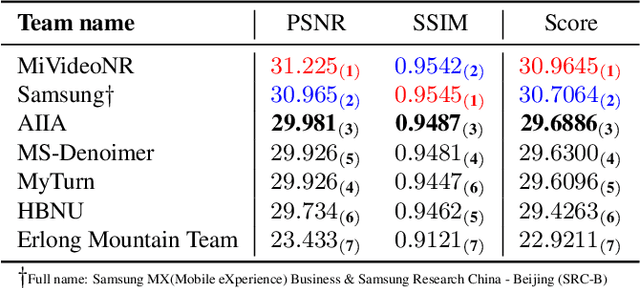
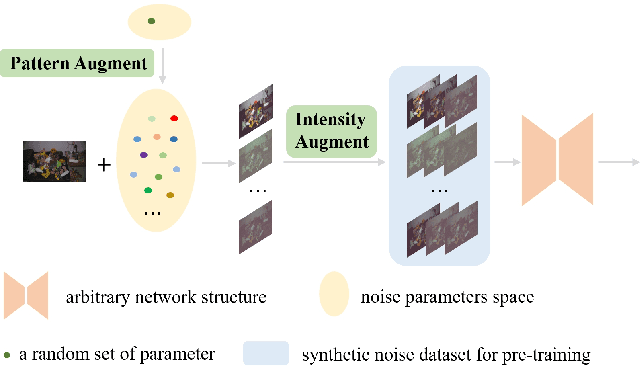


Abstract:The increasing demand for computational photography and imaging on mobile platforms has led to the widespread development and integration of advanced image sensors with novel algorithms in camera systems. However, the scarcity of high-quality data for research and the rare opportunity for in-depth exchange of views from industry and academia constrain the development of mobile intelligent photography and imaging (MIPI). Building on the achievements of the previous MIPI Workshops held at ECCV 2022 and CVPR 2023, we introduce our third MIPI challenge including three tracks focusing on novel image sensors and imaging algorithms. In this paper, we summarize and review the Few-shot RAW Image Denoising track on MIPI 2024. In total, 165 participants were successfully registered, and 7 teams submitted results in the final testing phase. The developed solutions in this challenge achieved state-of-the-art erformance on Few-shot RAW Image Denoising. More details of this challenge and the link to the dataset can be found at https://mipichallenge.org/MIPI2024.
MIPI 2024 Challenge on Nighttime Flare Removal: Methods and Results
Apr 30, 2024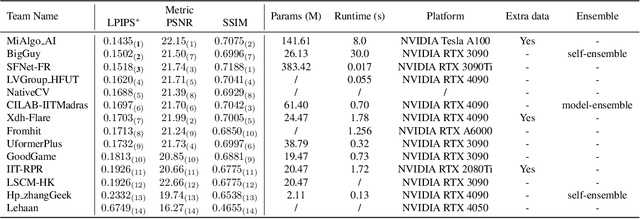

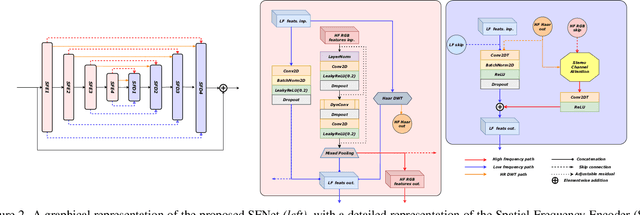
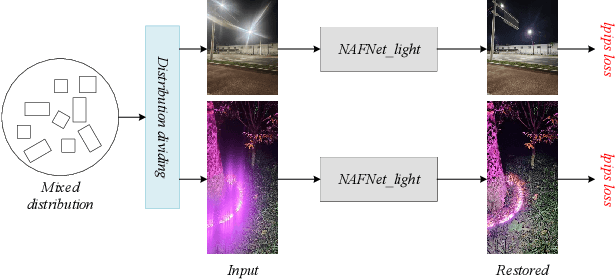
Abstract:The increasing demand for computational photography and imaging on mobile platforms has led to the widespread development and integration of advanced image sensors with novel algorithms in camera systems. However, the scarcity of high-quality data for research and the rare opportunity for in-depth exchange of views from industry and academia constrain the development of mobile intelligent photography and imaging (MIPI). Building on the achievements of the previous MIPI Workshops held at ECCV 2022 and CVPR 2023, we introduce our third MIPI challenge including three tracks focusing on novel image sensors and imaging algorithms. In this paper, we summarize and review the Nighttime Flare Removal track on MIPI 2024. In total, 170 participants were successfully registered, and 14 teams submitted results in the final testing phase. The developed solutions in this challenge achieved state-of-the-art performance on Nighttime Flare Removal. More details of this challenge and the link to the dataset can be found at https://mipi-challenge.org/MIPI2024/.
Learning Inclusion Matching for Animation Paint Bucket Colorization
Mar 27, 2024Abstract:Colorizing line art is a pivotal task in the production of hand-drawn cel animation. This typically involves digital painters using a paint bucket tool to manually color each segment enclosed by lines, based on RGB values predetermined by a color designer. This frame-by-frame process is both arduous and time-intensive. Current automated methods mainly focus on segment matching. This technique migrates colors from a reference to the target frame by aligning features within line-enclosed segments across frames. However, issues like occlusion and wrinkles in animations often disrupt these direct correspondences, leading to mismatches. In this work, we introduce a new learning-based inclusion matching pipeline, which directs the network to comprehend the inclusion relationships between segments rather than relying solely on direct visual correspondences. Our method features a two-stage pipeline that integrates a coarse color warping module with an inclusion matching module, enabling more nuanced and accurate colorization. To facilitate the training of our network, we also develope a unique dataset, referred to as PaintBucket-Character. This dataset includes rendered line arts alongside their colorized counterparts, featuring various 3D characters. Extensive experiments demonstrate the effectiveness and superiority of our method over existing techniques.
 Add to Chrome
Add to Chrome Add to Firefox
Add to Firefox Add to Edge
Add to Edge